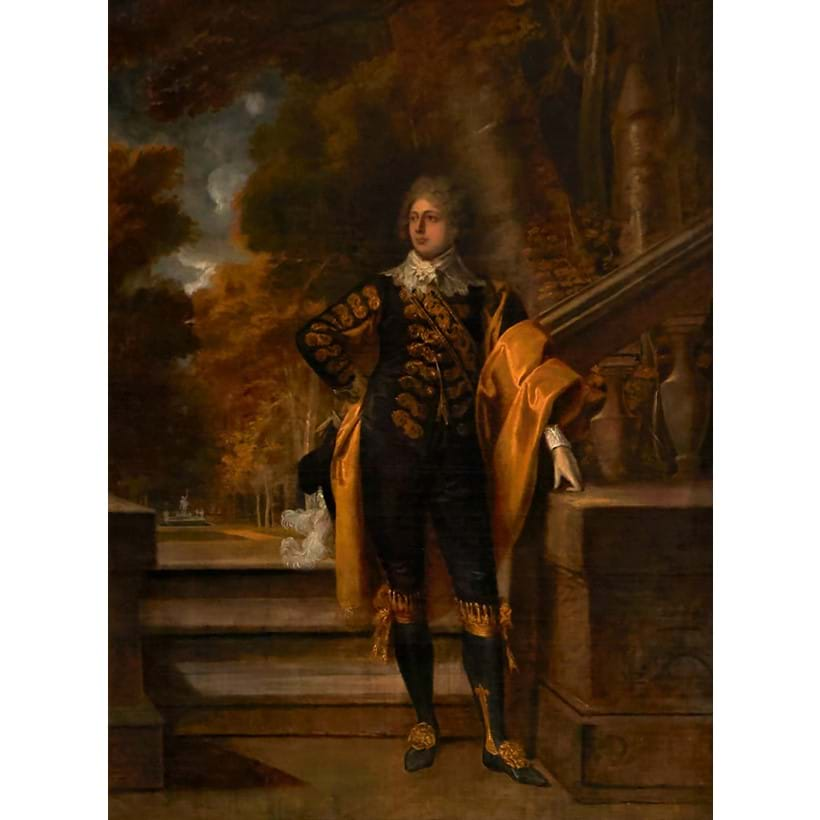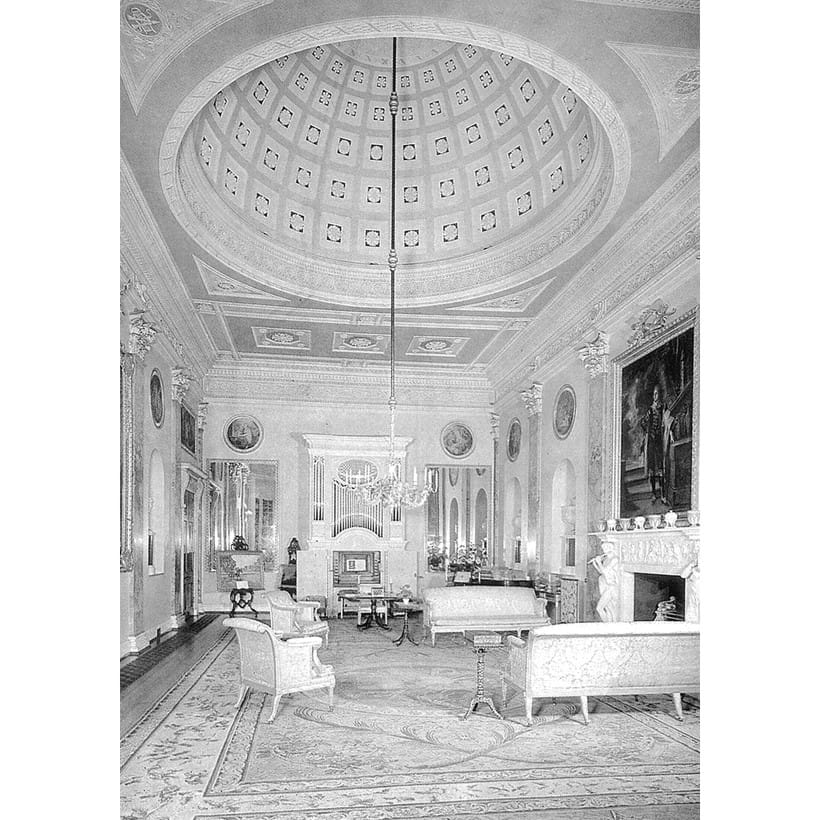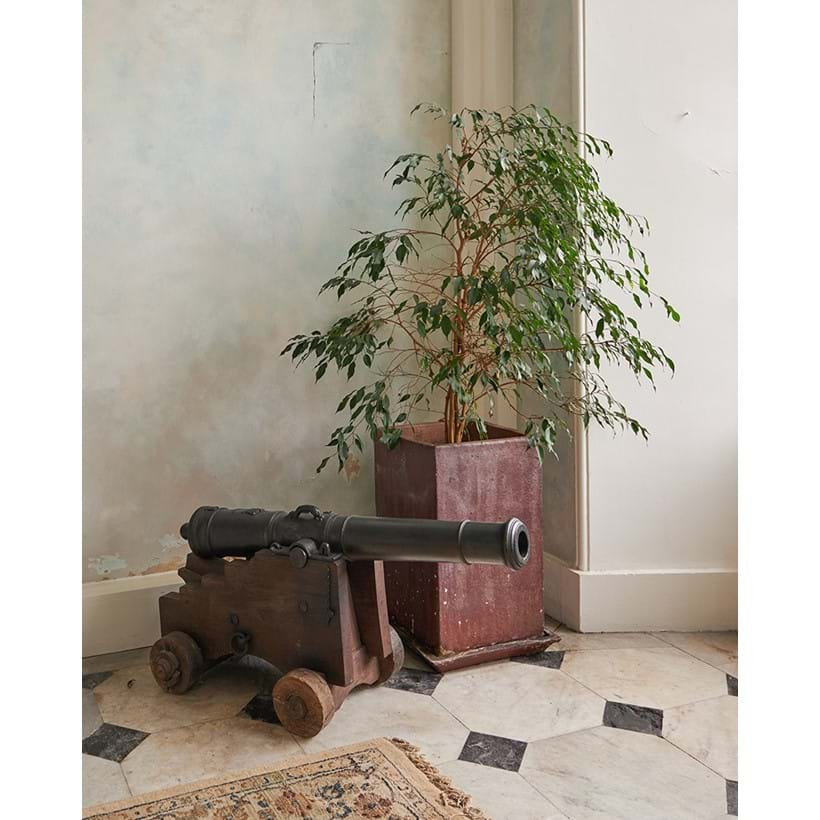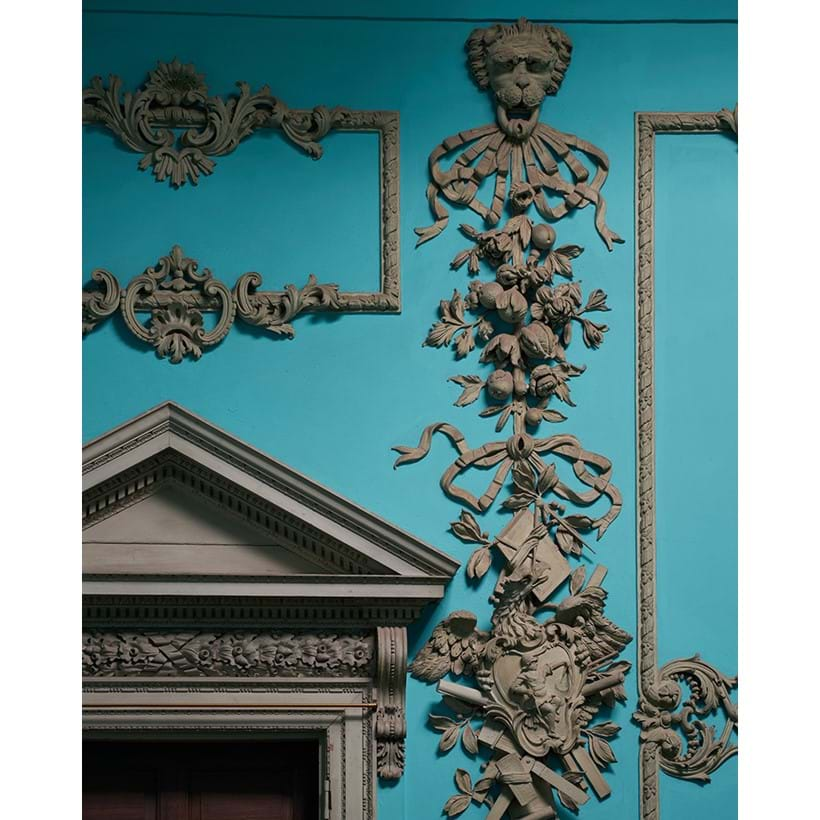The History of Powderham Castle | 3 June 2025
On Tuesday 3 June, we are excited to be offering a selected collection of items from the attics, storerooms, cellars, and outbuildings of Powderham Castle in our auction The Attic Sale: Powderham Castle & Brocklesby Park. The sale offers hidden treasures spanning the rich history of this storied country house. Here, we take a look at the 700-year legacy of Powderham Castle under the stewardship of the Courtenay Family.

Powderham Castle: The Ancestral Seat of the Courtenay Family
In the summer of 1325, the marriage of Hugh de Courtenay, Earl of Devon, to Margaret de Bohun established a family relationship with place and landscape that has endured for seven centuries. With her illustrious ancestry - being the granddaughter of King Edward I - Margaret brought to the union not only her noble blood and the famous swan crest but also the manor of Powderham, nestled beside the Exe estuary at the heart of Devon, which was part of her dowry. An ancient strategic landscape with command of the busy continental trade-route out of the Exe, Powderham soon became an ancestral seat of the Courtenay family – medieval magnates of the Southwest. Over the centuries the building campaigns of multiple generations have made Powderham one of the most architecturally layered and culturally significant private houses in the country.
A generation after Margaret and Hugh’s historic marriage, their fifth son Sir Philip Courtenay, Admiral of the West and Lord Lieutenant of Ireland, made Powderham his home by building Powderham Castle. Its original form was a fortified manor house centred upon a Great Hall and kitchen surrounded by six castellated towers - a form both practical and symbolic, combining a baronial aesthetic with a capacity for generous hospitality. These early structures still lie at the heart of Powderham’s architecture today, their enduring presence bearing witness to the centuries of adaptation and renewal that have followed.

A Stylistic Evolution: Continuity Through Transformation
The story of Powderham Castle is, above all, one of continuity through transformation - of a building and estate evolving through the tides of taste, politics, and domestic life. Over the centuries, it has been expanded, reimagined, and adapted by successive generations of the Courtenay family, each responding to the political, cultural and architectural ideals of their era. The result is a remarkable palimpsest: a self-consciously Gothic revival country house with visible traces of the Medieval, Georgian, Regency and Victorian periods, layered one upon another with surprising harmony.
This stylistic evolution has not occurred by accident, but as a conscious and living tradition of stewardship – respecting the old while embracing the new. The Courtenays’ sense of ancestral duty, rooted in their origins stretching back to the Crusades and Carolingian France, has imbued their approach to Powderham with a remarkable consistency of vision. The Castle’s consciously Gothic character - visible in its battlements, pointed arches, and romantic interiors - serves as a continual reference to it and the family’s medieval foundations, while also accommodating the comfort and decorative ambitions of later centuries.

Beyond its architecture, Powderham’s interiors provide a lens through which to view the social and cultural shifts of English country house life. From grand state rooms to service quarters, each space tells a story of use, reuse and adaptation, revealing how generations of inhabitants lived, entertained, and worked within these walls. Of particular interest is the way in which the contents of the Castle reflect both continuity and quiet change: a fusion of works ranging from the important and documented to the modest and domestic. Many objects were never discarded but were gradually replaced, stored, or repurposed - supplanted not by irrelevance, but by fashion’s inevitable march forward. In this way, Powderham preserves the strata of country house collecting, where objects from across centuries coexist in a silent, visual dialogue.
These items - be they grand commissions or humble furnishings - are, in many ways, frozen in time. Yet they remain a vibrant part of the Castle’s living history. They bear witness to private lives and public moments, to artistic ambitions and functional necessities. They offer insight into how the British aristocracy inhabited and interpreted their homes across the centuries, layering each generation’s tastes and priorities atop those of the last.
The most significant chapter in Powderham’s recent architectural and artistic development occurred during the 18th century, when the Castle emerged from its post-Civil War decline – it had been besieged and slighted in 1645, and abandoned for some decades thereafter. Under the guidance of three successive Viscounts Courtenay, the house was transformed from a medieval relic into a Georgian treasure house, reflecting the Enlightenment ideals of symmetry, order, and aesthetic refinement. The interiors were reimagined in accordance with the fashions of the age, and local and national craftsmen were commissioned to create interiors that expressed both prestige and modernity, while retaining Powderham’s beloved medieval core. The most notable remodelling occurred to the ancient Great Hall in the 1750s, when it was split in two to create what is now the Marble Hall, containing William Stumbel’s magnificent grandfather clock (the largest in Europe), and the sumptuous Staircase Hall, with John Jenkins’ extraordinary rococo plasterwork that is unrivalled in an English domestic interior. This remarkable space found fame in Merchant Ivory’s Remains of the Day, which was filmed (in large part) at Powderham.
3rd Viscount, William (Kitty) Courtenay, 9th Earl of Devon
Yet it was the 3rd Viscount William ‘Kitty’ Courtenay - later 9th Earl of Devon - who would leave the most indelible mark on Powderham’s cultural identity and the broader Gothic movement. Known for his beauty and his acute artistic sensibility, Courtenay was a notable figure in Regency society. His life was marked by scandal following the public revelation of his teenage relationship with the Gothic writer, architect, and fellow aesthete William Beckford. In an era when homosexuality was not only taboo but punishable by law, Courtenay became the subject of widespread condemnation and, much later in life, even exile. However, his influence on the older Beckford was significant: Courtenay appears as a leading character in Beckford’s famous Gothic novel, The History of the Caliph Vathek, which was written at the height of their relationship, and Powderham’s organically haphazard Gothic aesthetic was inspiration for Beckford and James Wyatt’s Gothic Revival masterpiece at Fonthill Abbey.

Given the scandal of his early life, Powderham offered Courtenay something rare: sanctuary. Within the safety of his ancestral home and its grounds, he found space to express himself, commissioning some of the Castle’s most exquisite interiors. Chief among these is the Music Room, designed by James Wyatt and executed by the sculptor Richard Westmacott in the early 1790s. The largest room in the Castle, it was conceived as a setting for performance and display, designed to impress guests and offer a stage for the Earl’s cultivated world. Given he was the only male amongst 14 children, he was also responsible for introducing his many sisters to society, and the Music Room provided a setting for his renowned hospitality. It also served as a deeply personal project - a symbol of resilience and of artistry prevailing amid adversity.

The furnishings from this period reflect Courtenay’s commitment to the highest standards of design and craftsmanship. A monumental Axminster carpet, specially commissioned for the Music Room from Thomas Whitty’s celebrated Devon factory, stands as a testament to the ambition of the project. At the time, it held the record as the largest carpet ever produced by the manufactory, later exceeded only by one created for the Prince Regent’s Brighton Pavilion. This was no mere decorative object - it was a statement of local pride, taste, and cultural sophistication.
Other pieces from the Georgian period similarly reflect the fusion of elegance and function. A rare cast bronze ‘two-pounder’ cannon, bearing the Courtenay family crest, was commissioned for use on the family’s yacht, Dolphin, combining naval technology with aristocratic flair. A George III mahogany and painted hall chair, attributed to the renowned firm of Gillows of Lancaster, features a painted roundel and viscount’s coronet - refined yet robust, symbolic of both identity and hospitality.

Powderham Castle Today
Today, Powderham Castle remains in the hands of the family who built it. Unlike many historic estates which were broken up, sold off, or transformed into institutions, Powderham has remained a family home, while continuing to offer baronial hospitality to guests from far and wide. This is just what Sir Philip intended when he built Powderham all those years ago and its preservation is not the result of nostalgia, but of active and evolving stewardship linked with a determination to serve. Conservation efforts are ongoing, aimed to maintain the Castle not as a static monument, but as a living enterprise - part historic family home, part working rural estate, and part cultural landmark.
As it enters its eighth century, Powderham stands not only as an extraordinary architectural achievement but as a testament to continuity through change. Its layered history invites reflection on the wider themes of British heritage: the intersection of private lives with national history; the evolution of taste across generations; and the enduring dialogue between tradition and reinvention. In Powderham, history is not merely preserved - it is inhabited, shaped, shared and continuously renewed.

View page turning catalogue
Auction Details
Tuesday 3 June 2025, 10.30am BST
Donnington Priory, Newbury, Berkshire RG14 2JE
Browse the auction
Sign up to email alerts
VIEWING:
- Viewing at Dreweatts London (highlights): 16-17 Pall Mall, SW1Y 5LU
- Monday 19 May: 10am–4pm
- Tuesday 20 May: 10am–4pm
- Wednesday 21 May: 10am–4pm
- Viewing at Dreweatts Newbury (full sale): Donnington Priory, RG14 2JE
- Friday 30 May: 10am-4pm
- Sunday 1 June: 10am-3pm
- Monday 2 June: 10am-4pm
FURTHER INFORMATION:
General enquiries: + 44 (0) 1635 553 553 | housesales@dreweatts.com
Press enquiries: press@dreweatts.com

















